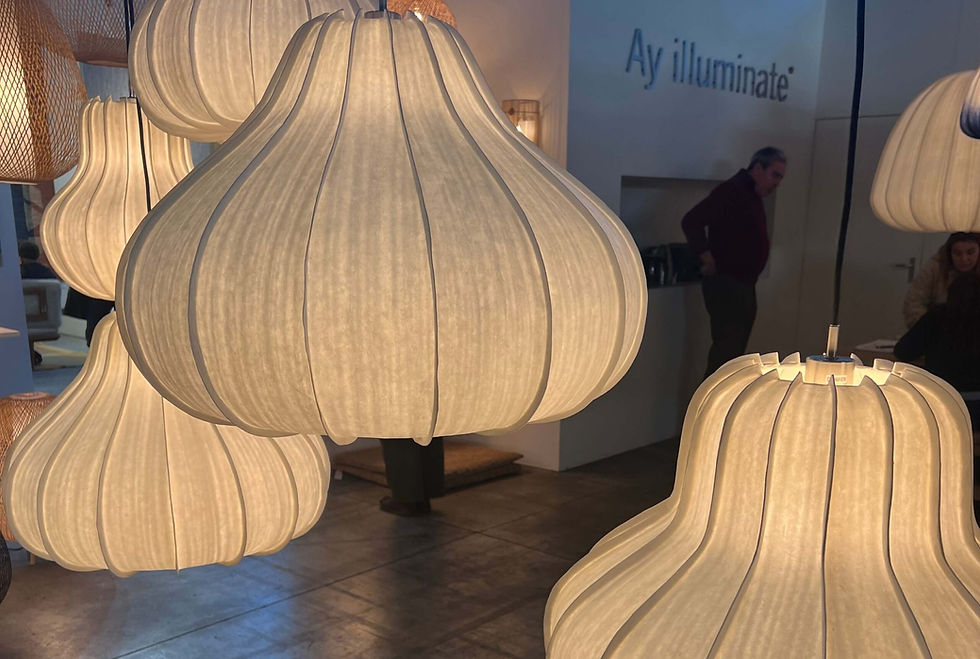Clerkenwell 2024 – Wood is Good
- Hatice Zorpineci
- Jun 7, 2024
- 3 min read
Updated: Mar 4
Wood has always been an integral part of our lives, present in our homes, workplaces, and social spaces—essentially, wherever we spend time.
Liz and I attended the ‘Wood is Good’ panel at Clerkenwell Design Week 2024, which allowed us to celebrate the versatile use of wood in furniture, craft, and architectural design, while also delving into its sustainability aspects, with instructive contributions from Martin Penrose from Benchmark and Grant Wilkinson and Teresa Rivera from Wilkinson & Rivera.
Here are 5 key takeaways we gathered from the ‘Wood is Good’ panel discussion:
Sustainable Timber Usage
As consumers and designers, our tendency to rely solely on market-demanded wood often overshadows utilising what we already have. During the panel discussion, Martin highlighted their collaboration with Fallen & Felled, a London-based timber company specialised in repurposing fallen urban tress into hardwood timber and furniture. This partnership offers architects, designers, and furniture makers a wide array of sustainable wood options, rather than relying on imported hardwood. Martin has also emphasised the significance of using certain wood types over others including:
American Red Oak – Despite its name, this timber isn’t red; the name refers to the leaf colour of the tree. It is a highly sustainable option for woodworking, furniture, and flooring, with its beautiful aesthetic and high performance.
British Ash – Highly durable and visually appealing wood, being the most common tree type in the UK. Many of these trees are estimated to be lost due to ash die-back. To combat this challenge, advocates like Fallen & Felled promote using fallen branches of ash trees in furniture crafting rather than leaving them unused.
Working with timber is not simple
While timber might appear to be an easy material to handle, this is not always the case. Teresa and Grant have pointed out that each complex masterpiece requires dedicated skill, work, time and experience. This includes tasks such as; precise timber bending at optimal temperatures and meticulous preparation. Additionally, the wisdom and experience required to create beautiful furniture using timber plays a significant role in mastering the art of woodworking.

Dining Windsor chair from Wilkinson & Rivera
Designing striking furniture doesn’t always require extreme measures
Designers can stretch limits to create ‘unique’ modern wood pieces, though these could potentially compromise comfort or ergonomics. Instead, incorporating simple touches with mindful of ergonomic principles and prioritising functionality, can result in a highly successful masterpiece.
Encouraging clients to explore sustainable wood options and accept longer lead times
As designers, it’s essential to collaborate with suppliers/furniture makers and together encourage clients to use sustainable wood variations. This includes raising awareness about different species and their properties, preparation of wood between felling and use, and sustainable practices such as reusing and repurposing existing wood. It is important everyone understands the value in slow production- it takes time to choose a tree that is fallen/felled, wait for the wood to be prepared for use, and develop a design which can be worked on by craftspeople. It is a slow process but results in truly unique, beautiful heirloom pieces.

Ovo Lounge Chair designed by Benchmark
Adaptive reuse of furniture – Benchmark specialises in crafting bespoke and sustainable furniture. They also prioritise collaborating closely with clients to rejuvenate their existing furniture into fresh, modern pieces. While this approach sometimes presents complex challenges compared to creating a new piece from scratch, it is a highly sustainable way to repurpose existing resources.
Do you need help with your renovation in London or Brighton? Reach out to our team here to guide you through the process.


